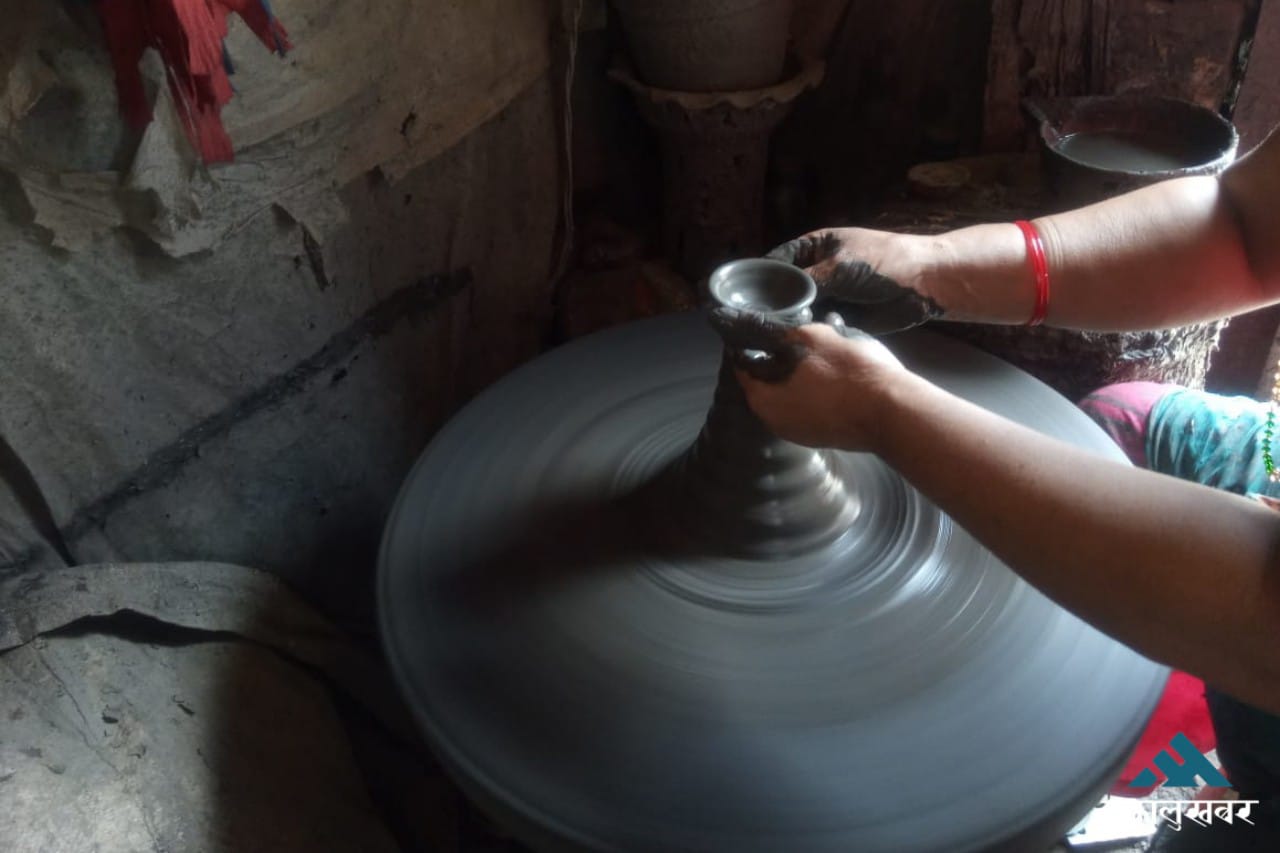Dayalaxmi Awal: Preserving pottery tradition amid declining demand (photos)
Despite physical challenges and a shrinking market, 50-year-old Dayalaxmi Awal continues to craft traditional clay pots, keeping Bhaktapur's cultural heritage alive.

KATHMANDU: Dayalakshmi Awal, a resident of Bhaktapur Nicosera, is 50 years old & she follows a strict daily routine.
She wakes up at 5 a.m., sweeps her house, and performs her morning prayers.
By the time she finishes her tea, it’s already 8 a.m. Then, she slowly starts making pottery, a daily task she has been doing for years.

Her pottery work continues throughout the day, usually until around 5:30 or 6 p.m. Dayalaxmi has a son and a daughter, both of whom have grown up and are now engaged in their own professions. However, she continues to make pottery, even after finishing her household chores.
Dayalaxmi was born into the Awal family, known for house construction, but after her marriage to a man from the Prajapati family, she learned the art of pottery. “I learned it on my own. My husband’s grandfather and father used to make pottery, so I picked it up after coming to my in-laws’ house,” she says.

Although she doesn’t make all types of pots, she is skilled at making traditional lamps, “ghedwas” (vessels for holding oil lamps), and large pots. Her son occasionally helps her when he has time, but she spends most of her day working on pottery. “I work whenever I have free time,” she explains. “I can’t do too much, though. Some people work from early morning till 9 or 10 at night, but I can’t manage that due to my physical limitations.”

On an average day, Dayalaxmi can make around 500 traditional lamps. When the sun is out, they dry quickly, but on rainy days, they can’t dry, and she has to take the day off. “When it rains, the lamps don’t dry, and there’s no place to store them,” she laments.

She also sells the lamps, and customers often come to her house to buy them. Regular customers pay Rs 35 per lamp, while occasional buyers are charged Rs 40. For those who order raw lamps, she sells them at Rs 2 each.

Though the demand for pottery increases during festivals, she notes that sales drop significantly during other times of the year. She attributes this decline to the rise of plastic, cement, and fiber pots, which have flooded the market. “There’s no market for clay pots now, and there’s also a shortage of good clay,” she says.

Dayalaxmi explains that she has to order clay in advance, and the price can vary from Rs 5,000 to Rs 7,000 per truckload. The quality of the clay is also inconsistent; sometimes it’s good, but other times, it contains too much sand, which ruins the pots. Pointing to a defective lamp, she says, “If the clay is bad and mixed with sand, the pots will crack like this. It’s tough work.”

When asked about the profitability of her trade, she responds that there isn’t much loss for those who can work hard. “There’s no real profit or loss. If you can work, you won’t incur losses. But there’s not much profit either; it’s just enough to make ends meet,” she remarks.

Dayalaxmi notes that during festivals like Dashain and Tihar, many people visit her house to purchase clay pots. Smiling, she recalls my comment, “I came before the festivals this time!” We both shared a hearty laugh.
However, she expressed disappointment that the government has shown little interest in promoting or preserving the pottery trade. As Dayalaxmi said, the art of pottery has received little support, and without proper attention from concerned authorities, this traditional craft, which reflects Nepal’s rich culture and heritage, may face the risk of extinction in the future.
-Tenzing Dolma Tamang









